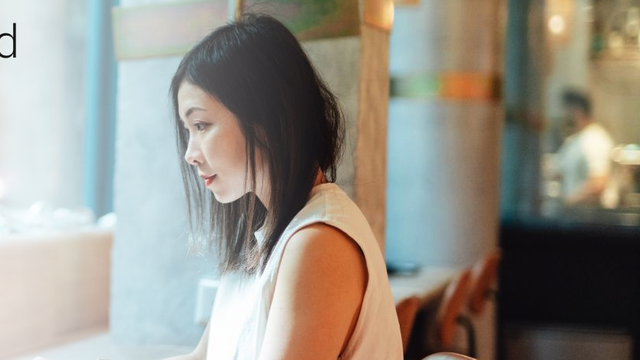


I have a great example of a government silo. When I worked in the Kentucky Natural Resources and Environmental Protection Cabinet, I had a cubicle beside a good friend. It was easy to make lunch plans by visiting each other’s desks. However, sharing information about our work was much more challenging. I worked in the Water Branch of the Environmental Protection branch of the agency while my friend worked in the Surface Mining section of the Natural Resources branch.
If I wanted to request information about a case from my friend, I would need to contact my supervisor. My supervisor would then get the Environmental Protection director, who would relay the request to the Natural Resources director. The Natural Resources director would tell my friend’s supervisor about the request, and the supervisor would tell my friend. Then, the information would go back through the chain to me. If I was lucky, receiving the data might only take a few hours from the initial request. Usually, it would take a couple of days to get the needed information. The process became a little faster when email was introduced to the office. But not that much quicker.
Bridgebuilders
I was reminded of my silo example as I read William Eggers and Donald Kettl’s new book, Bridgebuilders: How Government Can Transcend Boundaries To Solve Big Problems. “The thesis of this book is simple: governments at all levels can more effectively tackle society’s toughest challenges by collaborating with bridgebuilders who bring together different parts of government and tap into other sectors of society”. As the authors explain, when a problem is detected, governments build an organization to manage the situation. Kettl calls this the vending machine model because tax revenues go into the government agencies, and results come out.
The vending machine model works well for clearly defined problems. Think of fire departments or public health departments. These government agencies can create best practices and highly refined processes for a well-defined problem. However, society faces wicked problems which are hard to define and cross many boundaries. For example, there is homelessness. Homelessness is an economic problem, a job problem, a mental health problem, a drug problem, a family problem, and a law enforcement problem that needs the coordinated efforts of all levels of government, numerous nonprofits, communities, and businesses.
Eggers and Kettl argue that new strategies are needed to deal with wicked problems and wicked opportunities. “[W]ith bridgebuilders at the helm who can transform governance from hierarchy to networks, from authority to collaboration, from process to mission and from fuzzy responsibility to accountability for results” (p. 15). The authors recommend ten keys to building solutions:
- Knock down barriers
- Seek mutual advantage
- Nurture private partners
- Build trustworthy networks
- Grow catalytic government
- Focus on outcomes
- Make data the language
- Redefine accountability
- Cultivate cross-boundary leaders
- Make the exceptional routine (adapted from pp. 15-16).
Training Government Leaders in Bridgebuilding
Eggers and Kettl advise public employees to become bridgebuilders in the first 100 days of their new job in Appendix A of their book. Appendix B was more intriguing because the authors offer a syllabus for teaching bridgebuilding skills. It’s a good start because it is built around the ten keys. However, as I read the syllabus, I think bridgebuilders need training in other skills to help them break down barriers and lead solution networks.
The first skill would be design thinking. The ability to creatively solve problems with others and build empathy for customers is vital in dealing with wicked problems and opportunities. The second skill is network leadership. “Network entrepreneurs actively catalyze networks (or organizations that function like networks), leading to an exponential increase in growth and scale beyond what their own organization could accomplish.” The third skill is advanced collaborative communication skills. Communication skills that go beyond excellent presentation skills to building trust and psychological safety among the network members. The fourth skill is data storytelling, which is more than proficient data analytics to communicate the meaning of the data analysis. There are some great examples of how data analysis aided bridgebuilders in chapter 7 of the book.
The fifth skill is agile systems thinking focused on accountability. The eighth chapter of the book gives an excellent analysis of the problems of accountability in problem-solving networks. Bridgebuilders need to understand systems thinking and how to use agility in building solution networks. Eggers and Kettl’s book significantly appraise the new skills public servants and leaders need.
I look forward to training programs built around the vitally needed bridgebuilders in governments.
Originally Published on PA Times.
Published by
About our partner

Brantley Advanced Social Science Applications
BAS2A is shaping a future where employees and organizations are effective, adaptable, and innovative. Thanks to our state-of-the-art training solutions, we're preparing to tackle the challenges of the mid-21st Century head-on, armed with expertise and confidence.Dr. Brantley is an expert in turning workforce development digital. His goal is to make learning experiences more engaging and to foster a spirit of constant improvement within organizations. He is committed to helping employees become more knowledgeable, skilled, and responsive.BAS2A creates tailored and impactful training for your workforce. We use our vast experience in instructional design and deep learning engineering knowledge to develop online and face-to-face educational programs. These programs include training such as short, focused learning units to immersive, situation-based simulations. Dr. Brantley customizes training to fit the changing needs of our clients, giving them the knowledge, skills, and tools, they need to tackle the challenges of the mid-21st Century. BAS2A aims to build a never-ending learning and performance improvement culture for your organization.
Learn more































